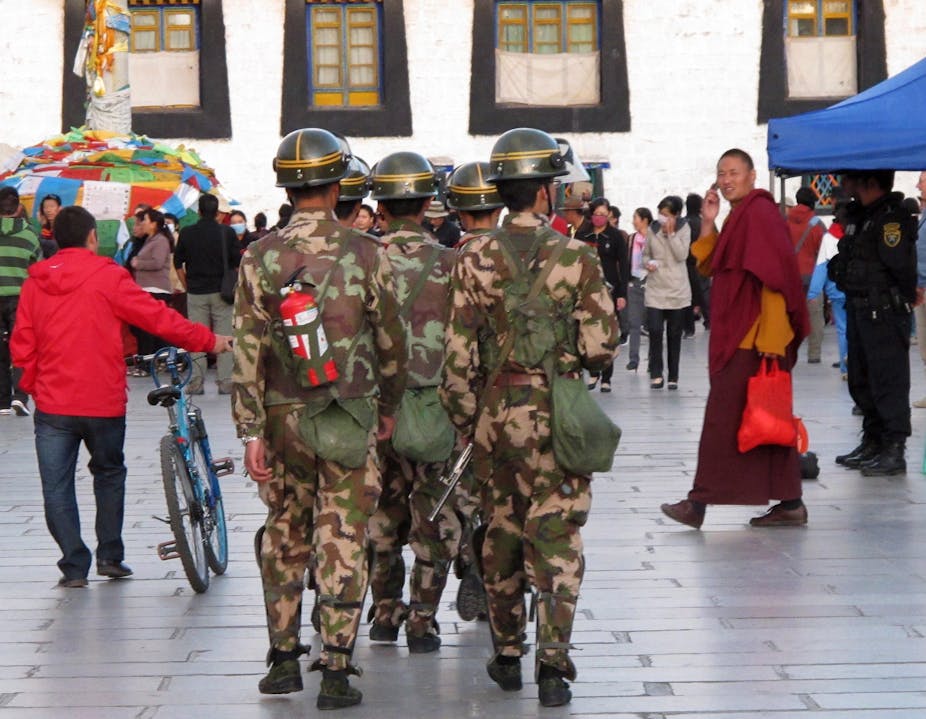On January 12, a young Tibetan man, Tsering Tashi, set himself on fire in a nomadic area in China’s Gansu province, while calling for the long life of the Dalai Lama and a free Tibet. Less than a week later, another young man, Drubchog, set himself alight in a nomadic area of Sichuan province. A third young man, Kunchok Kyab, burned himself last Tuesday. All died at the scene of their protest.
These three self-immolations, the first in 2013, follow a month-long pause since the self-burning death of a teenage girl, Wangchen Kyi, in a Tibetan region of Qinghai Province on 9 December last year. Since the first such act in 2009, 97 Tibetans have now reportedly self-immolated in Tibetan-populated areas of China: 12 in 2011, 81 in 2012 and three to date in 2013, most fatally.
As they burned, the self-immolators have each called for a free Tibet and cultural freedoms they believe are under threat, but above all they call for the return of the Dalai Lama to Tibet. The Chinese government has blamed the self-immolations and protests on external provocation, specifically instigation and encouragement by outside “hostile forces” the government refers to as “the Dalai clique”. Official spokespeople reject any responsibility for the self-immolations.
Local authorities already deploy massive security forces in the areas where self-immolations have taken place, treating these acts as criminal threats to social stability. Government and security offices utilise additional forms of coercive and punitive measures, including propaganda efforts, blocked communications, and detention of self-immolators’ associates.
Despite intensive security and other pressures, self-immolations surged in October-November last year, with 28 reported in November alone. Notably, during that period, the overall profile of self-immolators shifted from a monastic majority concentrated in Sichuan Province to a lay majority located outside of Sichuan, especially in Qinghai and Gansu provinces. From a political and security perspective, the shift to a secular majority and wider distribution poses a significantly more complex challenge to the Chinese government.
As local authorities intensified their crackdown, China’s Supreme People’s Court, Supreme People’s Procuratorate and the Ministry of Public Security issued a joint legal opinion to align judicial, prosecution and security agencies behind the drive to punish Tibetans who they suspect of having links to self-immolators as criminals, or who express sympathy for them. The opinion sets out parameters for local officials to use to criminalise a range of activities that officials associate with self-immolation, and to treat a number of such activities as “intentional homicide”. Other activities, such as gathering a group to mourn or collect funds for a self-immolator, would be prosecuted as crimes under China’s criminal law. This represents a more formal and powerful approach than previous measures.
State authorities may hope that such legal measures will effectively deter any further expressions of protest. Official pressures and measures putting family and sympathetic supporters of self-immolators at risk of punishment may have deterred self-immolations in the weeks between the burning deaths of 9 December 2012 and 12 January 2013. But the opinion more likely anticipates sensitive periods ahead, for example Tibetan New Year in February and the anniversary in March of the 1959 uprising in Lhasa when the Dalai Lama fled into exile.
By easing some of the pressures on Tibetans, and considering more effective application of its own system of “ethnic autonomy,” Chinese authorities could reduce tensions. But the recently-issued opinion foreshadows no such relief.
Threatening the consequences of non-compliance, public security officials forced Tsering Tashi’s family to forego customary Tibetan Buddhist rituals and accept the immediate cremation of his remains. Security personnel took Drubchog’s body from the site of his protest and cremated it the same day without informing his relatives. Kunchok’s body too was confiscated by authorities: mourners have gathered to perform prayers for him in front of the local government office, despite warnings to desist.
The disturbing probability of the 100th Tibetan self-immolation looms. Amid the strengthening of punitive measures against expressions of Tibetan grievance, the level of Tibetan resentment can only rise.


